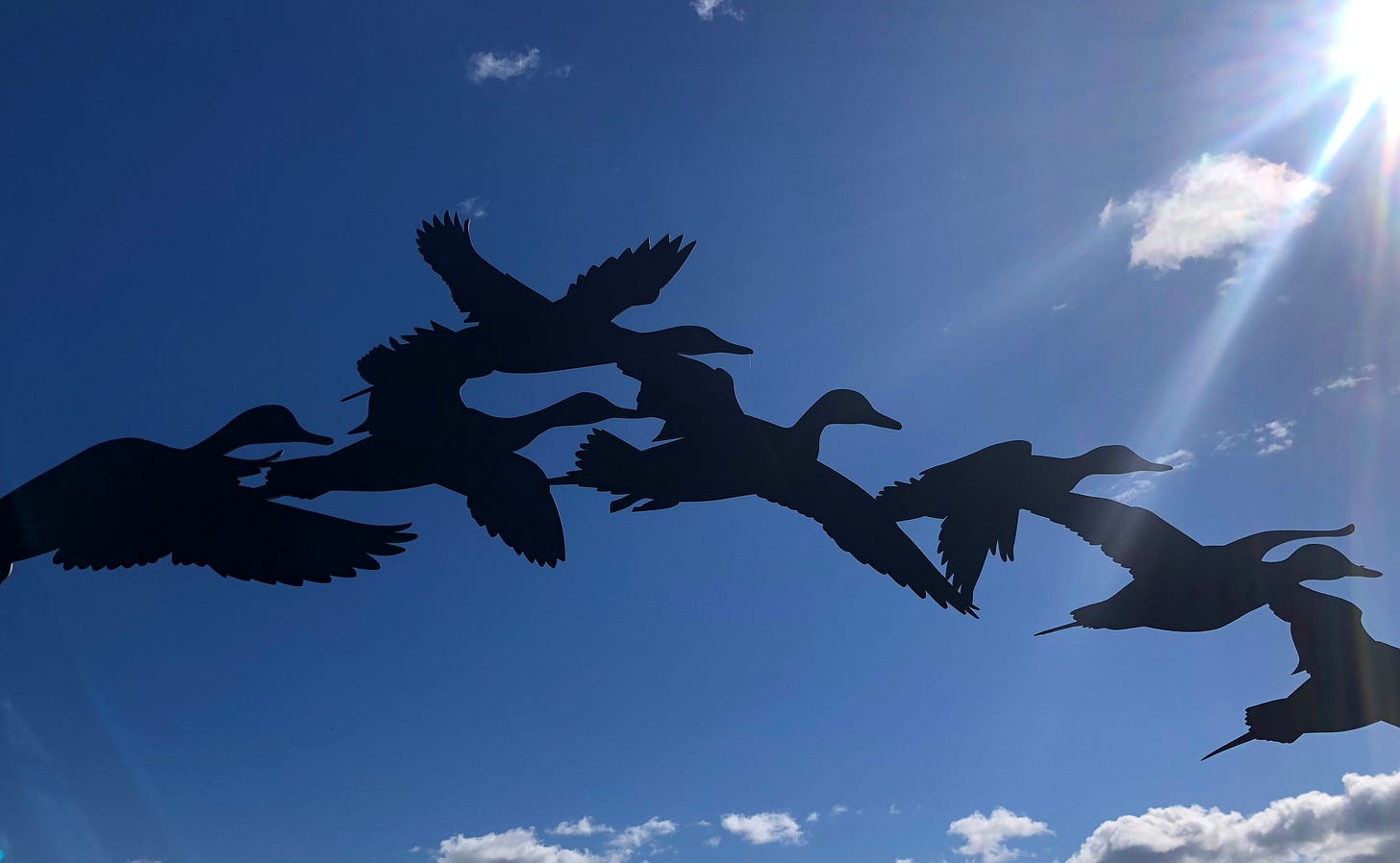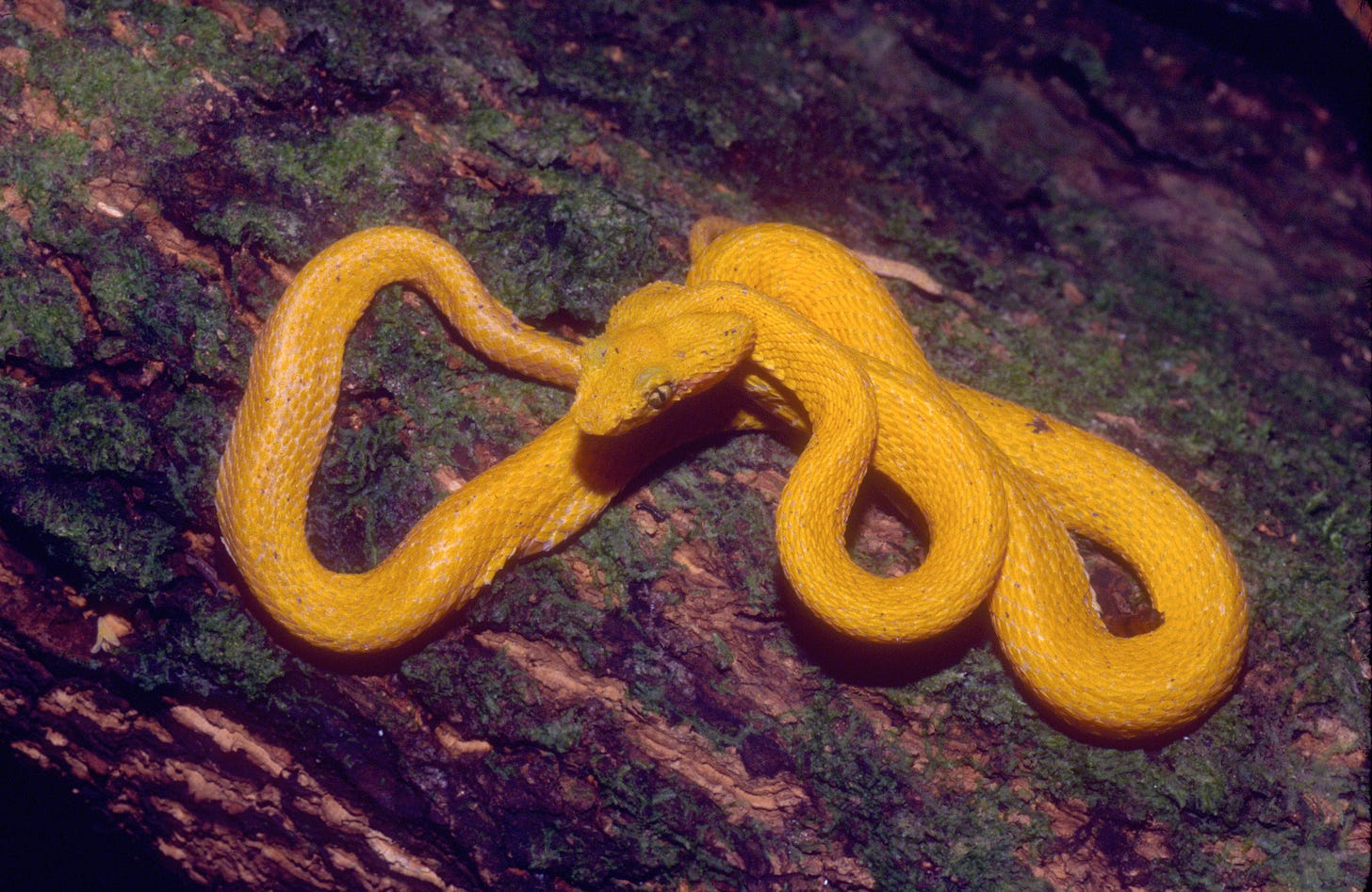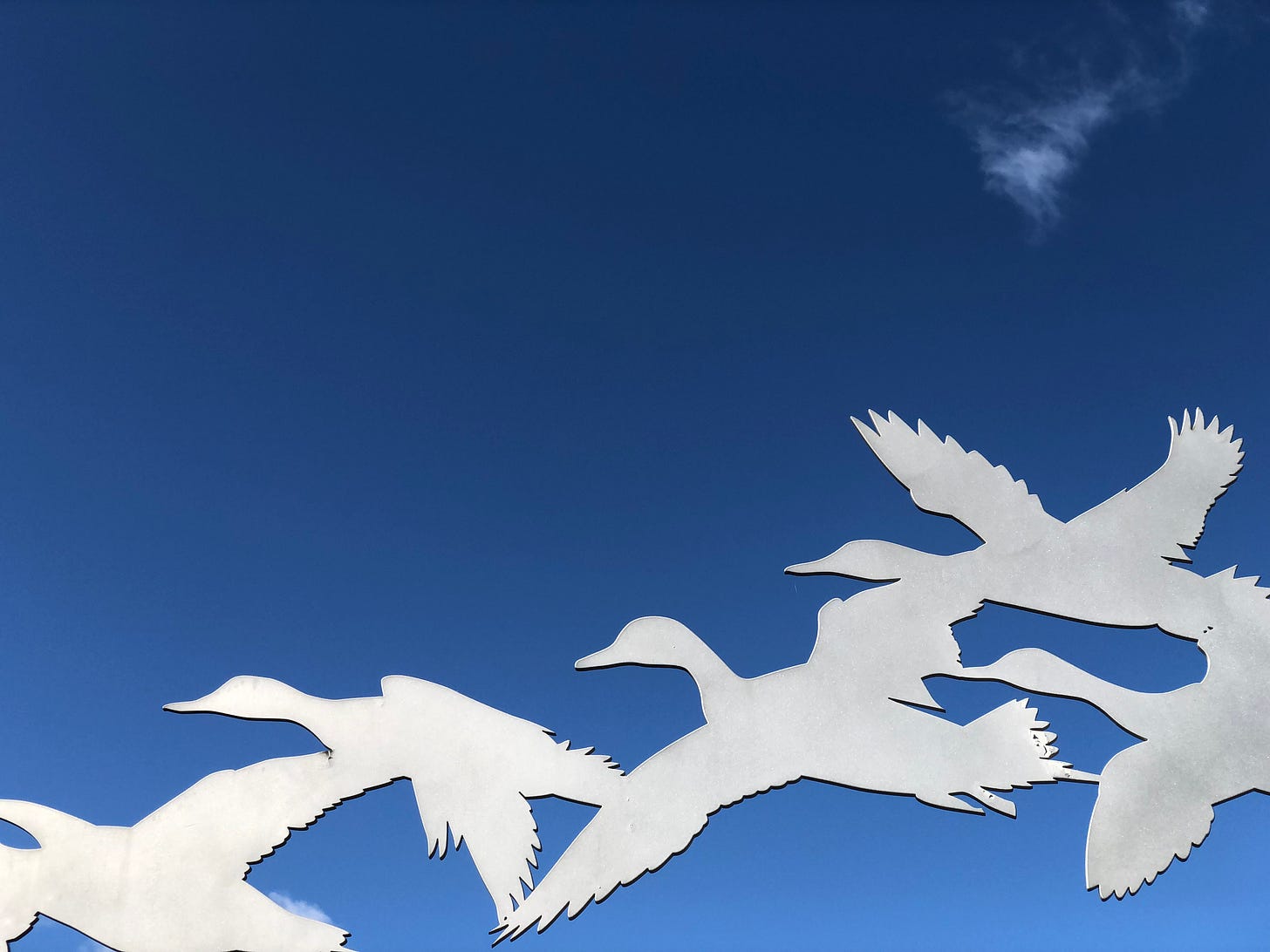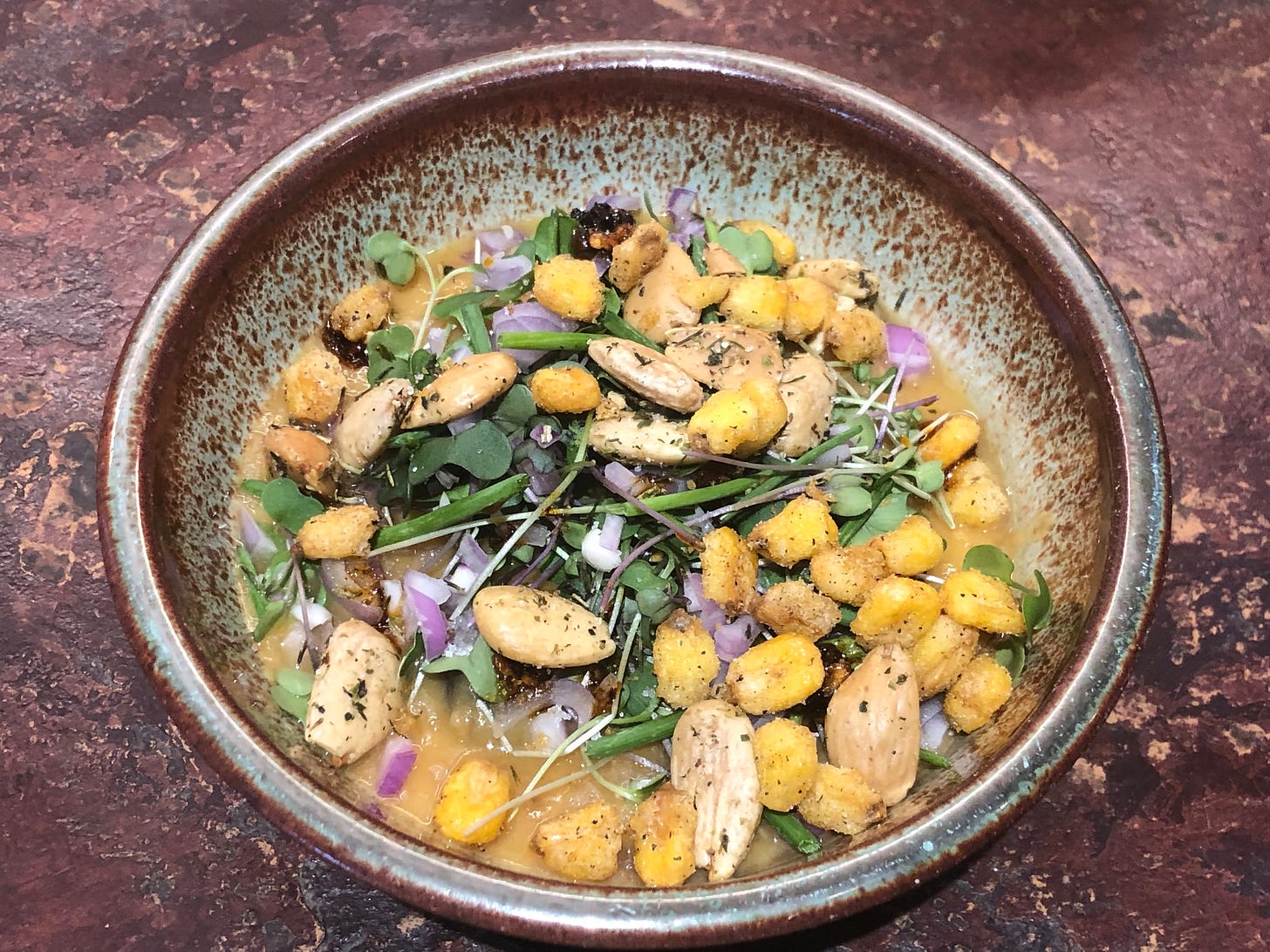This week, I have been thinking about many things—disheartening, frightening, and infuriating things. Mask mandates finally lifted in my part of the world, as have many public vaccine mandates. These things are long awaited, and appreciated. But many private vaccine mandates persist, as do some public ones. I am, for instance, unable to attend events at one of my son’s schools; were he to be in a play, or playing a recital, or a game, I would be unable to go watch him, to cheer him on, to be there for him. It feels that incrementally, cryptically, we have become a tiered society. A caste society.
Also this week, Albert Bourla, the CEO of Pfizer, said in an interview on Face the Nation that we are all going to need a fourth shot of his incredibly safe and effective drug. He also voiced optimism that children under five years of age will soon be able to offer up their bodies to the same drug.
This week I have been thinking about what is in store for young children with regard to the Covid vaccines, and the analogous barbarism of medical interventions being encouraged for young people who aren’t comfortable in their natal sex. March 12 was Detrans Awareness Day, and you can find the voices of just a few people who transitioned, then detransitioned, here. I would have thought, until just about yesterday, that we could all agree that profiting on the pain and mutilation of children is immoral1. I hope to live in that world again soon.
This week I have also been thinking about the War in Europe. Having been born decades after WWII ended, I never thought I would utter those words. This cannot end well. Meanwhile, rising prices, notably of gas, are being blamed on said War in Europe. The problem with this analysis is that we have been experiencing inflation, supply line disruptions, shortages, not to mention increasing despair, for two years now. Here is just one example, shared with me this week:
Everywhere we look, there is injustice, failure, and desperation. And there are more things, many more, which grabbed my attention and threatened not to let go this week. I suspect the same is true for many of you.
But it is important, always, to be able to step back, to assess, and to disconnect from the madness. The third decade of the 21st century seems primed to drive us all over the edge, and it is incumbent on all of us, every single one of us, to resist the chaos. This week I returned to a couple of antidotes that I always love: nature, and soup.
Trigger warning: snakes ahead.
Nature: Visits to National Wildlife Refuges
Go out into any nature to remind yourself of what is real and of what matters. But if you are near a National Wildlife Refuge (NWR)—of which I imagine there are analogs in countries outside of the U.S.—go to one now. This past week I visited an NWR that I had never been to before, and was reminded of how lovely they can be.
During the 16 years that I lived in Olympia, Washington, while teaching at Evergreen, I often visited—sometimes with my students, more often without—the Nisqually National Wildlife Refuge (recently formally renamed the Billy Frank Jr. Nisqually NWR). Over 700 acres of estuary were restored a bit over a decade ago, and the result is visible even from the I-5, the interstate corridor that runs like a spine near the West coast of the United States, from the Mexican border all the way to the Canadian border. Now there is visibly braided estuary ebbing and flowing, moving with the tides and the river, rather than fully constrained by the desires of early 20th century engineers.
Connecting the Nisqually River to the Puget Sound, the Nisqually National Wildlife Refuge embraces and encompasses the river’s delta, where salmon swim upstream in the Fall, to mate, and never to return. Bald eagles nest above the estuary, as do great blue herons. The eagles form pair bonds and build solitary nests, while the herons nest in rookeries so loud that even when concealed by distance or foliage, they can sometimes be heard across the open water. Otters play in the river, and beavers get busy there too, as beavers are wont to do.
And to the Columbia River Gorge, the Northern side of which is in Washington state, the southern side of which is in Oregon, I used to take classes on multi-day field trips in the Spring. There are many things to recommend the Gorge, one of them being Conboy Lake NWR. There I have seen herds of elk, and watched sandhill cranes engage in courtship displays, and found rubber boas, the only species of boa so far North. The boas are good and basal within snakes, and have no venom at all, so if you are kind to them and know how to do so2, you can handle rubber boas without risk to yourself or them3. That said, if you’re not sure what kind of snake you’ve encountered, don’t mess.
Snakes are polarizing for many people. I happen to be in the camp that loves them. How they make their way in the world, pushing muscle against ground (or water, although I’ll admit that aquatic snakes are a bit terrifying even to me), is elegant and unique, and the number of niches and habitats in which they now live is testament to their adaptive breadth. Perhaps in future posts I’ll ramble on about other snakes I have known, including another boa, the Madagascar tree boa (Sanzinia madagascariensis), who decided to snack on one of “my” frogs, Mantella laevigata, but was surprised to find that she was toxic, so ultimately spit her out. That frog went on to become a mother. Or the eyelash vipers whom I saw in such abundance on the Soropta peninsula in Panama, where a student of mine was surveying them—most of them yellow, but some of them beige, others pink, others a pale and beautiful green, all with that distinctive eponymous scale over each eye, looking like an eyelash. Or the fer-de-lance that struck at me as I climbed on hands and knees up a forested slope near the Caribbean coast of Costa Rica, alone and far from any road or other human, on perhaps the most ridiculous and intense day I have ever experienced.
Clearly I would prefer to be thinking about Snakes I Have Known—or even Snakes I Have Not Known—to most of the things I have felt compelled to think about these last few years.
This week I went to the Tualatin River National Wildlife Refuge for the first time. This time of year there is just one trail open, and it’s not very long, but oh how delightful (even without any visible snakes). I saw a hummingbird alight on the highest branch of a leafless tree. A pileated woodpecker sprayed decayed wood from a snag that he was pounding on with his head. A chipmunk froze in place just a few feet away from me, imagining himself invisible; compare that to the great blue heron, similarly still, but head cocked in my direction, his avian eye indicating full awareness of the situation. And I heard the cacophony of distant bird chatter, both early songbird song, and the jabbering of Canada geese. And on nearly every plant, there was new growth: some buds just beginning to appear, others already bursting out.
Overall, the experience is this: a place to breathe, for humans and non-humans alike.
There are of course many other National Wildlife Refuges—if you have one (or more) that you love, I’d like to hear about it in the comments.
Soup: Now with More Garden and Crunch
By the end of Winter I tend to crave fresh plants to eat. We eat a lot of high-quality meat in our house, especially beef and chicken, grass-fed-and-finished for the cows, and fed and treated as well as we can find for the chickens. But by the end of Winter I am eager for the new growth coming out of the ground, fed directly by the sun, salivating for berries and stone fruits that are still many months away.
So I have made this soup a couple of times now, and it pleases me mightily. Maybe more important yet, it pleases my family, all three of them, and oh I know how lucky I am to live with three such high-quality humans, whom I both love, and enjoy spending time with.
This soup has a pureed base, into which non-pureed vegetables are cooked, onto which the “garden and crunch” are added. You could easily make it vegan, substituting vegetable broth for the chicken stock, although I wouldn’t go that route unless I found myself out of animal stock. Animal protein and fat are good for you.
The really important thing with this soup is that you do not skimp on the “garden and crunch” on top. Really go to town. It adds texture and flavor and even noise and makes a simple soup into a meal. Eat with excellent bread (gluten-free if necessary, but sourdough would be delightful) that has been slathered in fantastic butter and sprinkled with large crystaled sea salt, such as fleur de sel or Maldon’s or any of a number of others.
Soup with Garden and Crunch
INGREDIENTS:
olive oil
sweet potatoes or yams or a combination of both (3)
yellow onion (1) - divided
carrots (~7) - divided
celery (2 stalks), diced
baby potatoes (a bunch)
garlic (3-4 cloves)
ginger (2” or so of fresh ginger)
chicken stock (~2 quarts)
sea salt
lemons (2) – zested and juiced
vinegar—fancy, or apple cider
smoky green chili powder
paprika
chili crisp
For the garden & the crunch
(The following is what I have used, but be creative here, making sure that you have abundant greens, some Alliums4, and salted crunchies of some sort.)
microgreens
chives, cut into ~1” pieces
shallot, minced
kosher or other coarse or flaky salt
freshly ground black pepper
pistachios
marcona almonds w rosemary
crunchy fried corn kernels
DIRECTIONS:
Bake sweet potatoes and yams (a mixture is nice) at 400° for one hour.
Prep other vegetables, setting each set of items aside in separate bowls:
Mirepoix: finely chop ½ onion, 2 carrots, and 2 celery stalks.
Chop ~ ¼ – ½ onion into fine crescents, and ~5 carrots into bite-sized pieces. Combine in a bowl and set aside.
Clean and halve or quarter potatoes; place in cold water.
Peel and mince (or press or grate) both garlic and ginger.
Zest lemons with a fine grater, making sure not to go too deep (the white pith is bitter); juice lemons.
Heat olive oil in cocotte, or other heavy-bottomed, high-walled pot.
Add mirepoix. Cook until fragrant and soft and mildly browned. Add some salt.
~10 minutes before sweet potatoes are done, add chicken stock and spices to mirepoix; bring to a boil, then let simmer.
When sweet potatoes are done and cool enough to handle, peel into a bowl, then place into cocotte. Use immersion blender—carefully, so as not to burn yourself or cut up the bottom of the pot—to roughly puree the soup.
Taste for flavor. Add half of lemon juice, and some vinegar. Add salt if necessary. Add chili crisp if desired.
Add potatoes and simmer for 15 minutes. Taste, add more acid / salt as desired.
Add carrot, onion, lemon zest, & juice. Cook ~20 more minutes.
When potatoes and carrots are cooked through, serve hot, with all of the accompaniments, and lots of them, sprinkled on top of every bowl.
Serve with fresh bread and butter
The world requires our attention. We are also responsible for the future and the world that our children will inherit. But we must also find peace and calm to do the work that must be done.
Take a breath, get out into nature, and make and share and enjoy good soup. Or, as I say at the end of every DarkHorse livestream:
Be good to the ones you love;
Eat good food; and
Get outside.
Be well, everyone.
Boy howdy do I have a lot more to say here, but for now will leave it there, directing those who want some of my thinking on this to my Substack essay on why we should not be allowing children to transition.
If you wonder what it might mean to “know how to safely handle a snake,” you probably don’t know how to safely handle a snake, so should not attempt it. If you’re curious, find someone who does, and learn from them.
Boas, being snakes, which are in turn reptiles, are far less susceptible than are amphibians (e.g. frogs and salamanders) to taking in poisons via their skin, but they are not immune. So if you have anything on your skin—sunscreen, or especially insect repellent—do not handle the wildlife. It’s not good for you, but that’s your choice to make. Do not make their choice for them.
Allium is the scientific name for the clade of plants, hundreds of species strong, that includes onions, shallots, chives, scallions, leeks and garlic.







Thank you, Heather, for mentioning Detrans Awareness Day.
I am a trans desister, meaning I identified and came out as transgender but stopped my transition process when my spouse who had lived as a transwoman for 8 years expressed severe transition regret. I am grateful that I got out before making irreversible changes to my body and risking the many dangerous side effects of drugs and surgeries that so many other detransitioners suffer from.
With deep inner work it is possible to heal from the pain that is labeled gender dysphoria. It wasn't an easy journey, but I now feel comfortable in my own skin, at home in my female body, accepting of being a woman, and more grounded and content than I have ever been in my life.
I shared my story for the very first time a couple of weeks ago (https://www.youtube.com/watch?v=j6q48s55Wkc&t=1s) and your writing and podcast has played a big part in me finding the courage to do so. Thank you for doing what you do, Heather, and for bringing attention to detransitioners and desisters.
<3
As a small sheep farmer, that graphic about the hay drives me nuts. It's such a conventional approach. Good fertile soil, when managed well, is it's own fertility. That might mean letting a field go fallow for a year and mow it so the cuttings break down to provide next year's fertility, or doing rotational grazing effectively. But no, lets keep cutting it and dumping petrochemicals on it. The funny thing about animals that eat hay, they LOVE weeds! Take something like Lambs Quarters - a horrible "weed", but actually has more nutrients than most grasses and animals love it. Weeds thrive in bad soils, they are the pioneer species and they drill down for nutrients and bring it up for future "better" plants.
When it comes to farming, just like when it came to renewable energy, we were on the cusp of coming up with a new story: regenerative agriculture, and it was picking up steam. But this war seems to have put that conversation by the wayside. Forget about the fact that we have the solution to fix the problem of petrochemicals, lets just stick with the old system and inform the consumer they are going to be in big trouble. Nah, time for a new story and I'm not following that one.